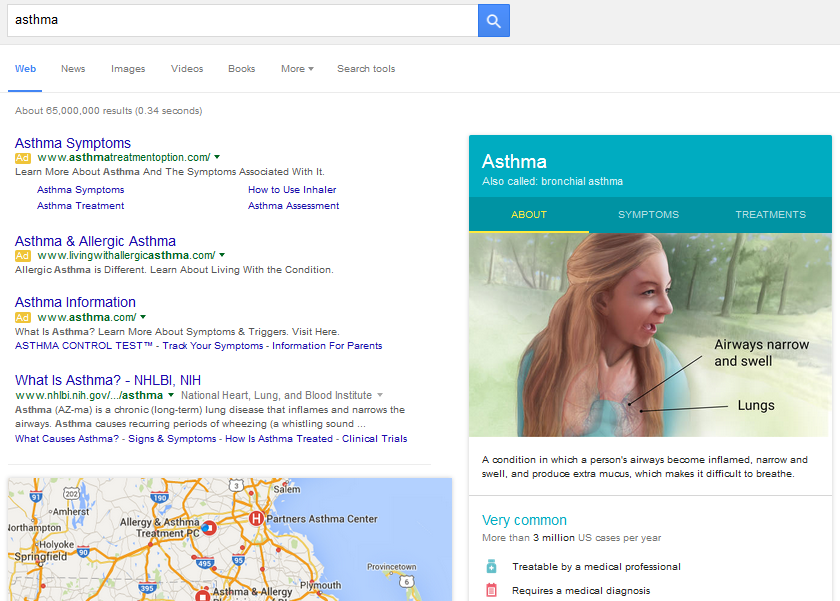by Charles River Interactive | November 20, 2019 | SEO, SEO Blogs, SEO Industry Trends
If you’ve spent any of your company’s time or marketing budget on SEO, you’ve likely heard about backlinks. Backlinks help determine how your website ranks in Google’s search results and for what keyword your website is ranked. While the concept of getting other webpages to link to your site is relatively simple, understanding how they interact with your site and with Google’s algorithm is far from straightforward.
Why are backlinks important?
To determine what and where your website ranks in Google’s
search results, they use a variety of factors, including backlinks. While you
can have the slickest, fastest, and easiest-to-use website in the world, if
there are no backlinks to it, Google may not rank it as well as it deserves
because no other website has given it a “vote” by linking to it!. So, if you’re trying to rank your
organization’s website, it would make sense to reach out to people to build the
backlinks, or alternately hire an SEO firm to build those backlinks. While both
can be good, indiscriminately building links either through your own efforts or
by hiring a third party can backfire, leaving you wondering “How can I get rid
of these spammy backlinks”?
How Bad are your Backlinks?
So, while you can build a multitude of really bad backlinks
really quickly and damage your traffic almost as fast, there are ways to fix
the problem. Namely Google’s disavow tool, which can help your recovery from
spammy backlinks. Google doesn’t encourage its use, and there’s a very
important reason why: Nowadays, not all bad backlinks cause ranking penalties. This
is because of Google’s Penguin updates, which separated the ideas of a spammy
website and a low-quality website. Spammy websites differ from
websites that Google ranks poorly because they actively attempt to scam a
user or manipulate a search engine. A low-quality website is just that –
low quality. Things like misspelling, bad grammar, bad user experience or a
poorly structured site doesn’t necessarily mean spammy, it just means that
search engines will rank other pages about the same subject higher; and links
from the low-quality domains will not receive nearly as much (or in many cases,
any) weight in Google’s ranking algorithm. Because of this, disavowing links is not
nearly as effective as it was prior to the Penguin update.
As a result, it’s harder to shape your website’s backlink
profile to what you need it to be – if
you’ve got a website with thousands of backlinks, and half are from low-quality
domains, that’s still a bunch of pages that you’d need to review in some way to
determine which to cut and which to keep, rather than only going by
industry-standard metrics like Moz’s Domain Authority to determine the
backlink’s value.
So, armed with this information,
how do you find the bad backlinks and disavow them? It’s actually relatively simple: you filter
backlinks with features in common that look spammy; this includes aspects of
the domain like:
Low domain-level scores on SEO
Tools
Lots of SEO tools give their own
rating to domains based on things like ranking, domain age, content length,
content quality, backlink quality, etc. Regardless if you’re using Ahrefs,
Brightedge, SEMRush, or another tool, find the lowest-rated pages and filter
out everything else. That’ll give you your initial pool of low quality and
spammy backlinks.
Spammy Top Level Domains
Top-level domains (TLDs) appear at the end of a domain name, for example the top-level domain for https://charlesriverinteractive.com is “.com”. More obscure top-level domains (like “.biz”, “.pizza”, “.info”) are cheaper to buy than more common ones like “.com”, “.org”, or “.net”. Because of this, spammers love less-common top-level domains, and they buy them in bulk. Some are almost entirely used by spammers – according to The Spamhaus Project , 94% of websites using the TLD “.gdn” are spam. Look for groups of domains with TLDs that are obscure and rate highly for webspam – these URLS are good candidates for disavowal.
Spammy Domain Names
While it’s not necessary that a
domain’s name match the content on the site, it’s easy to tell if a website has
a spammy domain name. Look for terms related to “adult” searches, (adult
videos, gambling, etc.) and other “spammy” search terms, like asbestos and
payday loans.
Beyond these types of terms, look
for “copycat” websites – they’ll have a
URL similar to a well-known, authoritative website, but with a different
top-level domain (think “washingtonpost.pizza” or “forbes.gdn”). These are most
definitely spam – it’s common for organizations to buy lookalike domains so
that they don’t get used by someone else, but they’ll usually never host
anything on those domains, or at most redirect to their real website. If
they’re backlinking to you, they’re most likely not legitimate, and you can be
confident in disavowing them.
Domains on the Same IP
The internet has greatly expanded
in the last 20 or so years, and while IP addresses were usually assigned to one
domain, it’s not uncommon to find multiple legitimate domains on the same IP.
However, any domains that meet one or more of the last three criteria and share
IP addresses are absolutely, no-doubt-about-it spam.
Generating a Disavow List
So now that we know the signs of a spammy domain, how do you get the list? The most straightforward way is also the most laborious – generate the list by filtering for these spammy domain indicators in Excel. However, it takes hours to do right and it might be worth engaging the services of a reputable marketing firm to speed up the process and ensure an accurate and effective domain-based link disavow list. If this is the case, don’t hesitate to contact Charles River Interactive! We’ve got the experience and technology to find spammy backlinks and create the strategies that elevate your business’ web presence and drive the traffic you need for business growth.

by Charles River Interactive | February 2, 2018 | Organic Search, SEO, SEO Blogs, SEO Industry Trends, Uncategorized
Super Bowl LII takes place this Sunday, February 4th at 6:30pm in Minnesota. Last year, more than 111 million viewers watched Super Bowl LI and the incredible comeback of the New England Patriots over the Atlanta Falcons. It can be expected that a similar number of viewers will tune in again this year as the Patriots battle the Eagles for what could be their 6th Super Bowl win.
Although actually watching the Super Bowl is the most important event this upcoming weekend, personally, I find that the food during the Super Bowl is just as important to the overall experience.
In my house, during football season, there’s always something “buffalo chicken” related, whether it be wings, tenders or a nice dip (my favorite). But, what about outside of my house? Which is most popular? To find my answer, I went to right to the source: Google. What is the most searched for buffalo chicken snack form during the week leading up to Sunday’s game? Looks like the Internet is with me because “buffalo chicken dip”, in red, has historically been the most popular of the “buffalo chicken” related snacks leading up to the Super Bowl:

Blue Cheese or Ranch with your buffalo chicken?
Fortunately, or unfortunately, with “buffalo chicken…”, in my house, comes the debate ranch or blue cheese. I was hoping to finally put an end to this debate and prove the blue cheese was the favored pairing, by researching average monthly search numbers using Google Adwords. Unfortunately, my research proved me wrong.
Comparing the query “ranch recipes” to “blue cheese recipes”, ranch outnumbered blue cheese by an average of 700 monthly searches, according to Google Adwords. Even the trend for these searches proved me wrong! “Ranch recipes” are more popular during AFC and NFC Championships and Super Bowl weekend than “blue cheese recipes”.

Based on that information, looks like I’ll be making a buffalo chicken dip with ranch instead of blue cheese mixed in.

Who wants to be healthy on Super Bowl Sunday?
Turns out, a lot of people do. As did many Americans, I set a goal to get healthier in 2018. Obviously, buffalo chicken dip with ranch dressing is definitely not the way to go about doing that. Lucky for me, I’m not the only one looking for either healthy or good Super Bowl snacks! Interestingly enough, looking at Google trends, the query “healthy super bowl snacks” has seen a 50% rise in search queries since last Super Bowl weekend. Looking at January and February 2017 average monthly searches for “healthy super bowl snacks”, the query had 1.2 million and 1.8 million searches, respectively.
Looking for inspiration to make some healthy super bowl snacks along with your buffalo chicken dip? The following websites are holding the top spots in search results:
Let’s not forget about those 3 million American’s who have celiac disease that need a gluten-free option to indulge in during the Super Bowl. Although queries surrounding “gluten-free super bowl snacks” range from 10 to 40 average monthly searches, according to Google Adwords, the following websites hold the top spots in search results for these treats:
Gluten-free or not, healthy snacks or buffalo chicken dip, I know I can’t wait until game time to watch Super Bowl LII and munch on some yummy treats, no matter what they are. Oh, ya, and Go Pats!

by Charles River Interactive | October 1, 2015 | Organic Search, Search Engine Marketing, SEO, SEO Industry Trends, Uncategorized
We’ve done it. You have done it. So have a lot of other people we all know.
What is it?
Searched for information about a health condition online. As of February 2015, Google made it easier to find this type of information with a knowledge graph containing details for more than 400 medical conditions. And in early September, they more than doubled the number of conditions and enhanced the visual appearance of the health conditions knowledge graph, and added a downloadable PDF with the information. So now, when you search for a common condition such as “asthma”, you will see a page that looks like this:

I’m sure you’re thinking, “This is great – I get information about the condition, including symptoms and treatments. I don’t see any problems.” The problem is what if you are a hospital or medical facility with an asthma treatment program, and you have just spent time optimizing your web pages to rank in one of the top positions for the term? Now you are not only competing with health information sites such as WebMD as well as other hospitals, but you need to drag the searcher’s attention away from the bold visual.
All is not hopeless with this development. There are opportunities for hospitals and health care providers, including:
- Users that will scroll past the knowledge graph to organic results are likely to be more qualified leads. Students and casual browsers who are simply looking for definitions and general information will have no need to look further. Patients and families truly looking for care for a condition will be seeking additional information.
- Long-tail queries are (at least for now) not displaying the knowledge graph. So although phrases such as “exercise induced asthma” and “pediatric asthma” have less search volume than the broad term “asthma”, organic search results have better visibility and thus better click-throughs.
Beyond this, the question that remains for hospitals and healthcare providers is whether there is any benefit for them in maintaining pages on their site about medical conditions. For users that are seeking care for a condition, there is still value in gaining a ranking position in that space as the knowledge graph does not provide direction for treatment. Bottom line – perhaps there is a silver lining in the knowledge graph in allowing hospitals to do what they do best, provide treatment.
by Charles River Interactive | October 28, 2013 | Organic Search, SEO Industry Trends, SEO Jobs, Uncategorized
 By Sam Coren
By Sam Coren
When I first started networking with other SEOs, I found out that there are quite a few different paths that lead people to this line of work. One reason for this is that there is very little by means of formalized, structured SEO education out there. Although it seems that in the past couple years, judging by all the wonderful Facebook ads I get, that some colleges have begun offering courses in digital strategy including SEO / PPC. However, within the SEO community, we have our hesitations about learning SEO in an academic environment.
Some of my colleagues at Charles River Interactive ventured into SEO consulting after tenures as webmasters, paid search planners, and various in-house marketing positions. We often talk about what types of experience, skills, and mindsets it takes to really succeed in this role. While the different types of experience leading up to someone becoming an SEO vary significantly, there are common traits that all great SEOs seem to have, regardless of where they came from.
So without further ado, here’s what we’ve come up with as the 4 universal “make-or-break” traits that you need to become a great SEO:
(more…)







